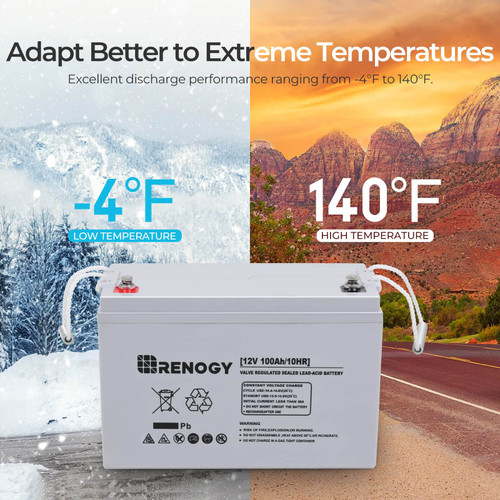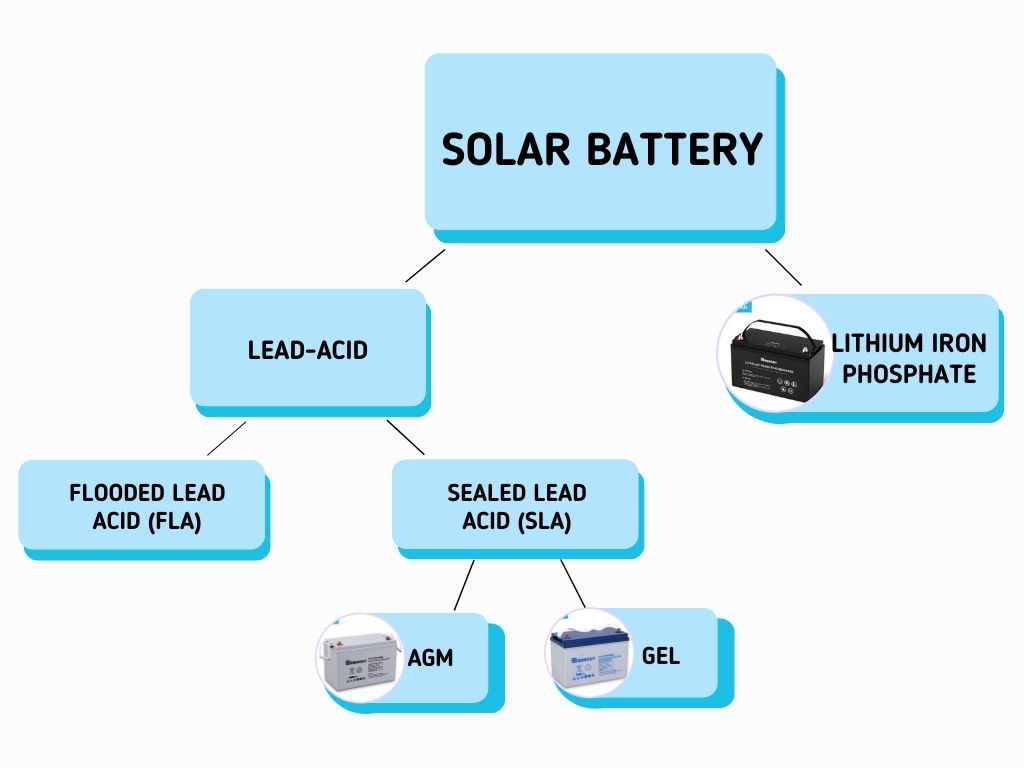What Is An AGM Battery and How Long can it Last?
Choosing the right battery is crucial for optimal performance and longevity in automotive and renewable energy systems. AGM (Absorbent Glass Mat) batteries have gained significant attention for their advanced technology and reliability. But what is an AGM battery, and how long can it last? This article explores the fundamentals of AGM batteries, including their construction, advantages, and lifespan. Whether you're powering a vehicle, boat, or renewable energy system, understanding what is an AGM battery and its capabilities can lead to better performance and longer-lasting power solutions.
What is an AGM Battery?
The term "AGM" stands for "Absorbed Glass Mat." An AGM battery is a premium type of valve-regulated lead-acid (VRLA) battery that offers significant advantages over traditional flooded lead-acid batteries. In an AGM battery, the electrolyte solution is absorbed into a specialized glass fiber mat sandwiched between the battery's positive and negative plates. This unique design completely contains the electrolyte, preventing any potential leakage or spillage. AGM batteries are classified as sealed, maintenance-free batteries because the electrolyte never needs to be refilled. Their spill-proof, leak-proof construction allows AGM batteries to be mounted in any orientation without risk. This sealed, absorbed glass mat design is what gives AGM batteries their distinctive performance benefits over standard batteries, making them ideal for renewable energy systems, vehicles, and backup power applications.
How Do AGM Batteries Work?
Understanding how AGM batteries work is key to appreciating their unique advantages. Like traditional lead-acid batteries, AGM batteries have a positive electrode made of lead dioxide and a negative electrode of spongy lead. However, there are some notable differences:
- Absorption: In AGM batteries, the electrolyte solution is absorbed into a specialized glass fiber mat sandwiched between the positive and negative plates. This absorption completely contains the electrolyte, preventing any potential leakage or spillage.
- Recombination: AGM batteries employ an efficient recombination process. As gases are produced during normal charging and discharging, they are recombined within the battery itself rather than venting to the atmosphere. This minimizes water loss and the need to refill the electrolyte.
- Low Internal Resistance: Compared to flooded lead-acid batteries, AGM batteries have lower internal resistance. This allows for quicker charging and discharging, making them well-suited for high-demand applications that require bursts of power.
The combination of absorbed electrolyte, recombinant design, and low resistance is what gives AGM batteries their distinctive maintenance-free, leak-proof, and high-performance characteristics.

Benefits of AGM Batteries
AGM batteries offer several advantages over traditional flooded lead-acid batteries, making them a popular choice for various applications. Here are some of the key benefits:
- Maintenance-free: AGM batteries are sealed and do not require regular topping up with water, making them virtually maintenance-free.
- Spill-proof: The electrolyte is absorbed in the glass mat, preventing leakage or spilling, even when the battery is inverted or subjected to vibrations.
- Vibration and shock resistance: The robust construction and secure electrolyte containment make AGM batteries resistant to vibrations and shocks, making them ideal for applications like RVs, boats, and off-road vehicles.
- Efficient charging and discharging: AGM batteries can be charged and discharged more efficiently than traditional lead-acid batteries, resulting in improved performance and longer life.
- Environmentally friendly: AGM batteries are considered more environmentally friendly as they do not release gases during operation and can be easily recycled.

How Long Does an AGM Battery Last?
The lifespan of an AGM battery can vary considerably based on several key factors. Premium quality AGM batteries from reputable manufacturers tend to have the longest life expectancies. The depth of discharge is also crucial - batteries cycled at shallow depths will outlast those routinely drained to near-empty levels. Operating conditions like temperature and vibration exposure impact longevity as well.
In general, you can expect a high-quality AGM battery to last approximately:
- 5 to 8 years in standby/float applications like backup power supplies and security systems where depths of discharge are shallow.
- 3 to 5 years in deep cycling applications such as solar power storage, RVs, marine craft and off-grid systems that routinely drain the batteries down significantly.
Proper charging practices tailored to AGM batteries can help maximize their lifespan. Excessive deep discharges below 50% capacity and sustained high heat levels above 77°F (25°C) will degrade AGM batteries prematurely. With proper care and use, AGM batteries provide reliable long-lasting performance in a maintenance-free package.
 Data source: Lab test results of Renogy's 12V 100Ah AGM Battery
Data source: Lab test results of Renogy's 12V 100Ah AGM Battery
AGM Battery vs. Standard Battery vs. Lithium: Which Is Better?
Before exploring AGM batteries in depth, it's important to understand the main battery technologies available on the market. There are four primary types of batteries, each named after their unique design and internal composition:
Flooded Lead-Acid Batteries. Flooded batteries utilize lead plates suspended in a liquid electrolyte solution with large separators between the plates. The liquid electrolyte flows freely within the casing during operation. These are the most affordable but require regular maintenance to replenish water levels.
Absorbed Glass Mat (AGM) Batteries. AGM batteries contain a fiberglass mat between the positive and negative lead plates that absorbs and immobilizes the electrolyte solution. With the acid electrolyte held in the glass mats, AGM batteries are sealed and spill-proof.
Gel Cell Batteries. Gel batteries are similar to AGM in being sealed and leak-proof, but use a semi-solid electrolyte suspended in a gel form rather than absorbed glass mats. The gelled electrolyte prevents any leakage.
Lithium Iron Phosphate (LiFePO4) Batteries. LiFePO4 batteries utilize lithium iron phosphate chemistry rather than lead-acid. This lithium-based technology offers lighter weight, higher energy density, and longer lifespans but at a premium cost.

When comparing AGM batteries to standard flooded lead-acid batteries and lithium-ion batteries, each type has its advantages and disadvantages:
Standard lead-acid batteries
Pros: Most affordable option
Cons: Require regular maintenance, prone to spilling, shorter lifespan
AGM batteries
Pros: Maintenance-free, spill-proof, longer lifespan, vibration-resistant
Cons: More expensive than standard lead-acid batteries
Lithium-ion batteries
Pros: Lightweight, high energy density, long lifespan
Cons: Significantly more expensive, require specialized charging and management systems

The data is estimated for references.
How Do I Know If My Battery is Agm? 3 Steps
#1 Manufacturer's labels shows such information
Battery type is usually instructed on the product labels on the body of a battery. If the label is illegible, you can also check its user manual for specifications, ask the online store or go to the store where you bought the battery.
#2 Observe the top of your battery
AGM batteries are specifically designed with negative and positive terminals that protrude from their flat top. If you find such terminals, you can be 99.99% certain your battery is an AGM battery.
#3 Slightly shake the battery
Highly not recommend to do this step, but since you still cannot identify your battery after going through the methods previously mentioned, this will be the ultimate choice you have to resort to.
Shake the battery, and if you feel any fluid inside flowing, then it is wet battery. But if you feel a relatively solid inside, it's an AGM battery.
Conclusion
In summary, understanding what is an AGM battery reveals a superior power solution. Renowned for their Absorbed Glass Mat design, AGM batteries offer maintenance-free operation, spill-proof construction, and vibration resistance, making them ideal for automotive and renewable energy systems. With a lifespan ranging from 5 to 8 years in standby use and 3 to 5 years in deep cycling applications, these batteries ensure long-term reliability. For top-quality AGM batteries, consider Renogy, a trusted manufacturer known for its advanced technology and dependable performance. Choose Renogy AGM Batteries for efficient, durable, and eco-friendly power solutions.
FAQ
What is the disadvantage of AGM batteries?
AGM batteries tend to have a higher initial cost compared to traditional flooded lead-acid batteries, although their long-term benefits often justify this investment.
What happens if you charge an AGM battery on regular?
Charging an AGM battery with a regular charger can lead to overcharging, potentially damaging the battery and reducing its lifespan. Specialized chargers designed for AGM batteries are recommended for optimal performance.











